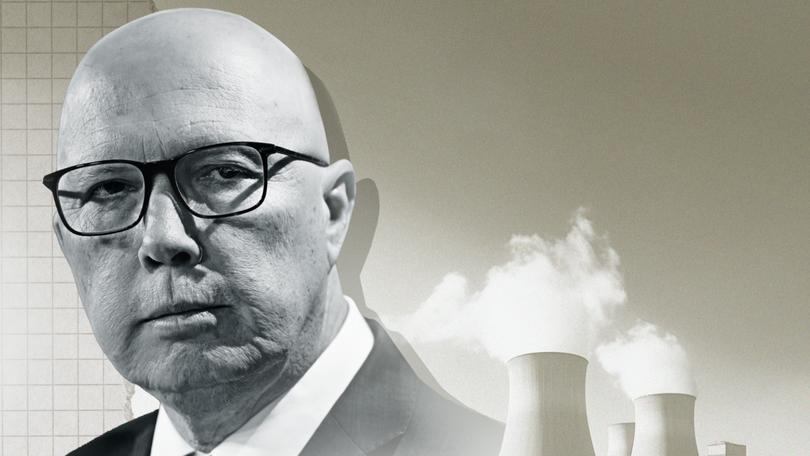Peter Dutton to release cost of plan to build seven nuclear reactors

A fight over the merits of nuclear power in Australia is heating up as the Coalition prepares to release its costings for the plan to build seven reactors across the country.
The opposition is set to release this week the second of two reports by Frontier Economics modelling energy costs, this one examining the effect of adding nuclear power to the grid.
It comes almost six months after Opposition Leader Peter Dutton released his party’s plan to convert seven coal-fired power station sites around the country to nuclear power between 2035 and 2050.
Sign up to The Nightly's newsletters.
Get the first look at the digital newspaper, curated daily stories and breaking headlines delivered to your inbox.
By continuing you agree to our Terms and Privacy Policy.Mr Dutton says his plan will supply cheaper, more reliable energy to households and businesses.
“We’ve got a credible policy that we’re putting forward, and it will transition our economy into a modern economy where we can compete with our competitor nations and stand proud in the world,” he told Sky News.
But he conceded that to bring power prices down in the short-term, “we need to bring a significant amount of gas into the system (and) coal is going to be in the system for longer than Labor’s admitting at the moment.”
He denied nuclear could only supply 4 per cent of the nation’s needs, as the Government claims.
The nuclear stations would be publicly owned, which Mr Dutton said was necessary to give a level of assurance to the public that would not be there if they were privately owned.
“I think that is demonstrated through the research, and that’s something we should respect,” he said.
Cabinet minister Murray Watt accused Mr Dutton of publishing his costings while many Australians were focused on the summer holidays.
“Peter Dutton is planning to take out a big bucket of radioactive waste in the lead up to Christmas to try to hide the fact that his costings don’t stand up, that he will be making electricity far more expensive, that his policy will only deliver about 4 per cent of our energy needs, and it won’t even happen,” he said.
“If he was actually proud of his policy and confident of it, it would have been out some time ago.”
Mr Dutton said last week the Coalition had planned to release its nuclear power costings multiple times since June but pulled back to let the Government stew in its own political woes.
Frontier Economics said its work was funded and directed” solely by itself “because of the large amount of ill-informed and misleading cost comparisons being publicly made about nuclear power”.
Its first report, released in mid-November, tested its assumptions against the modelling done by energy regulator AEMO for a switch to a system dominated by wind and solar power with storage such as batteries or pumped hydro.
It found the base generation and emissions costs between now and 2050 would be $608 billion, slightly lower than AEMO’s projection of $671 billion.
Frontier also noted the AEMO costings did not include transmission costs of about $62 billion.
Aside from the cost, the Coalition has not explained how it plans to overcome legal obstacles to nuclear power, which is banned in Australia at a federal level and by several states.
Mr Dutton said on Sunday the federal ban “can be dealt with if there’s a if there’s a bipartisan position, which I think can be achieved post-Anthony Albanese’s leadership”.
Senator Watt disagreed.
“I can guarantee Mr Dutton that we are not going to provide bipartisan support to an energy policy that would lift Australians’ energy costs by over $1000 per household,” he said.

